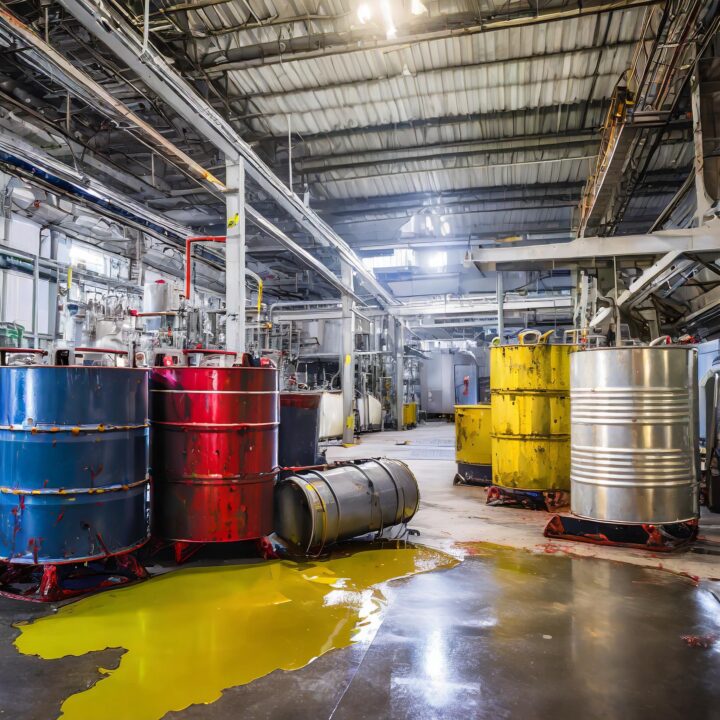NEWS
Safeguarding Your Workplace: Mastering Spill Control with Absorbents and Secure Storage Solutions

Spills in the workplace are more than just a slip hazard; they are a significant safety concern that can lead to fires, environmental damage, and health issues. Managing these risks is not only a matter of regulatory compliance but also one of corporate responsibility and due diligence.
Effective workplace spill management entails having the proper strategies in place for hazard prevention and rapid response. There are a variety of tools and practices available to help mitigate the risks associated with such spills, including the use of fuel absorbent materials and secure storage solutions.
Understanding the essentials of spill control and containment is crucial. Here, we navigate the methods for mastering spill control to safeguard your workplace, focusing predominately on the importance of absorbents and storage.
1. Identifying Risk Areas and Spill Sources
Before a spill happens, it’s important to identify where and how a spill could occur. Evaluate all areas where chemicals, oils, and other potentially hazardous substances are used or stored. Regular risk assessments are necessary, ensuring that all employees know what to do in the event of a spill.
Areas of high risk often include loading docks, storage areas, refueling stations, and anywhere that chemicals are transferred from one container to another.
2. Prevention Is Better Than a Cure
Wherever possible, avoiding spills is the best strategy. This involves routine maintenance of equipment, proper handling procedures of hazardous materials, and staff training. Employees should understand how to properly transport and store materials to prevent accidental spillage.
Additionally, the installation of barriers and containment systems can offer a physical line of defense, preventing any spill from spreading uncontrollably.
3. Absorbents: The First Line of Defence
In the event a spill does occur, absorbents come into play as an immediate response. Depending on the type of substance spilled, choosing the right absorbent is vital to effective spill management. For oil-based spills, specialised oil mats can be deployed that selectively absorb petroleum-based liquids while repelling water. This property is particularly useful in outdoor settings or in marine environments.
Other times, a general-purpose fuel absorbent may be required, capable of handling a broad range of liquid spills. Several options exist, from loose absorbents like granules and powders to pads, rolls, and socks that can absorb and contain spills.
4. Secure and Compliant Storage Solutions
Spill control isn’t just about cleaning up; it’s also about correctly storing hazardous materials. The utilisation of compliant storage solutions is non-negotiable. For example, gas cylinders should be stored in a locked and ventilated gas bottle cage to reduce the risk of leaks, spills, or accidents. These cages are designed to withstand harsh external environments while preventing unauthorised access.
5. Staff Training and Spill Response Plans
Training your workforce on spill response is integral to workplace safety. Staff must be knowledgeable about the types of absorbents to use, the personal protective equipment required, and the steps to take when a spill occurs. Furthermore, having a detailed spill response plan in place is critical for coordinated actions during an emergency.
Response plans should outline the procedures for evacuation, spill containment, clean-up, and reporting. Regular drills can help employees become familiar with these processes and reduce response times substantially.
6. Regular Audits and Updates to Spill Kits
Regularly checking and replenishing spill kits ensures they are always ready for use. Absorbents have a finite shelf life and may need to be replaced after a period. A comprehensive audit can also reveal if any additional materials or equipment such as booms, overpack drums, or personal protective gear are required.
7. Documentation and Continuous Improvement
Maintaining records of spills and responses aids in compliance with regulations and standards. It also provides valuable data that can be analysed for continuous improvement. Investigating each spill, no matter how small, can reveal insights into preventive measures and areas for enhanced training.
Choosing the Right Absorbents and Storage Solutions
Selecting appropriate absorbents and storage solutions is a critical aspect of spill management. For oils and fuels, oil mats and fuel absorbents are indispensable tools, absorbing high volumes of liquid quickly and efficiently. In the case of gas storage, gas bottle cages not only ensure safety but also aid in organisational efficiency and regulatory compliance.
To summarise, a holistic approach to spill management within the workplace encompasses preparing, preventing, responding, and reflecting. By implementing robust strategies, using suitable spill control products like fuel absorbents and oil mats, and ensuring secure storage with solutions like gas bottle cages, the workplace becomes a safer environment for all.
It is the responsibility of each organisation to take spill management seriously, investing in the right tools and training to prevent environmental damage and protect their workforce. Remember, when it comes to hazardous spills, proactive measures and readiness can make a significant difference.
For additional resources and expert spill control solutions, seek the guidance of industry leaders who specialise in providing comprehensive spill management products and services. Proper spill management isn’t just a regulatory requirement; it’s a commitment to safety, sustainability, and a professional standard of care for your business and its surroundings.
Harper Harrison is a reporter for The Hear UP. Harper got an internship at the NPR and worked as a reporter and producer. harper has also worked as a reporter for the Medium. Harper covers health and science for The Hear UP.










